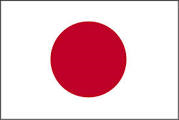Although I have never traveled to Jordan, my husband was lucky enough to spend several weeks on a work trip in 2007. He came back with the most beautiful stories, pictures, and memories. By far the one thing that stayed with him the most, was the hospitality and generosity of the Jordanian people. He told me stories upon stories of meetings with Jordanians that treated him like royalty. The love shown by hosts to their guests was something he never experienced in any of his travels. He also was pleasantly surprised how different ethnic and religious groups lived in harmony. Sunni Muslims, Shia Muslims, Greek Orthodox, Roman Catholic, Armenian Orthodox, Syrian Orthodox, and Protestants.
It is felt even by walking around the streets of Jordan where the phrase "ahlan wa sahlan" ("I welcome you") is heard nearly everywhere a person goes. There is an old Jordanian proverb that shows the important tradition of hospitality in Jordanian culture that states:
"The host must fear the guest. When he sits and shares your food, he is company. When he stands and leaves your house, he is a poet" (Lazim al-mu’azzib yikhaf min al-dhayf. Luma yijlis howa dhayf. Luma yigum howa sha’ir). How beautiful is that?


Some of the traditions of hospitality come from Jordanian Bedouin culture. For example, often, the host and his/her guest are to share a cup of black coffee. The host drinks out of the cup first, ensuring that the coffee is the right temperature. The guest then drinks what remains of the first cup. A second cup is served to the guest, and then a third. The host also serves the guest copious amounts of food and is careful to make sure the guest is comfortable and stays as long as he/she would like. Such displays are referred to as karam, the Arabic word for "generosity" or "hospitality" that also has implications of "nobility," "grace," and "refinement."
The Nabateans built the capital of their ancient Arab kingdom, Petra, in what is now Jordan between 400 B.C.E. and 160 C.E. From Mount Nebo in western Jordan, many people believe that Moses saw the Promised Land. When the Ottoman Empire collapsed after four hundred years of rule, Britain divided up the Fertile Crescent, and modern Jordan was born.
One of the best known groups from Jordan’s population is the Bedouin. As they are known in Arabic, the Bedu, or “desert dwellers,” endure the desert and have learned to survive its unforgiving climate. It is difficult to count Bedouins, but it is generally known that the majority of Jordan’s population is of Bedouin origin.

Some Jordanians are of Palestinian origin, having been forced from their homeland during the 1948 and 1967 wars with Israel. Jordan was the only Arab state to grant all Palestinians the right to Jordanian citizenship and many have exercised that option. This decision plays a very important part in the political and economic life of Jordan. Some Palestinians continue to live in one of the 10 refugee camps scattered throughout the West Bank and Northern Jordan, where the United Nations Relief Works Agency(UNRWA) is responsible for the welfare of the refugees, including their education and health. Today there are an estimated 1.4 Million Palestinian refugees registered in Jordan. Although massive influxes of refugees have taken a toll of Jordan's economy, Palestinian Jordanians have made significant contributions to the health and prosperity of their new homeland.

The differentiation between Jordanians, Bedouins, and Palestinians is clear in this society. Jordanians are defined as residents who have lived east of the Jordan River since before 1948. Palestinians are defined as residents whose birthright extends back to areas west of the Jordan River. People of Bedouin descent are considered to be of the purest Arab stock.
In deserts with little vegetation and water, Bedouin families have lived in the traditional way for thousands of years. They roam freely and pay little attention to borders. Bedouins form the core of the army, occupying key positions, even though their political influence is diminishing. Palestinians are typically referred to as educated, hard-working people, and their influence in Jordan has resulted in a greater emphasis on education and the development of a richer, global economy. Jordanians who no longer espouse the Bedu nomad lifestyle are gradually accepting the standards of the modern Arab world.
Arabic is the official language of Jordan. English is taught to all students and is widely spoken.
The Jordanian flag has black, white, and green horizontal stripes with a red triangle on the hoist side bearing a white seven-pointed star. The flag of the Palestinian people is identical but does not have the white star.





























